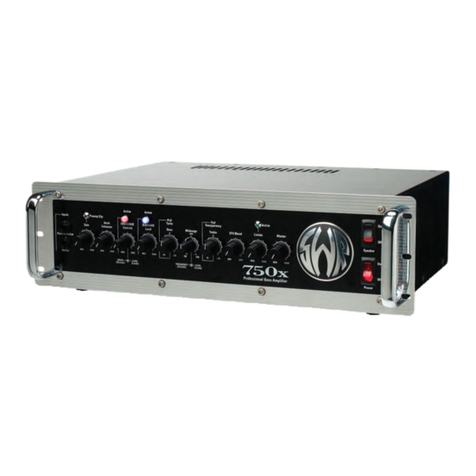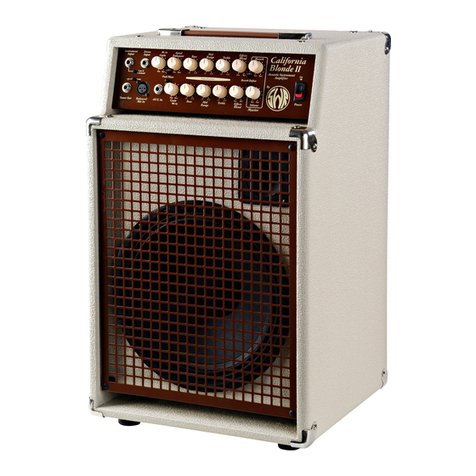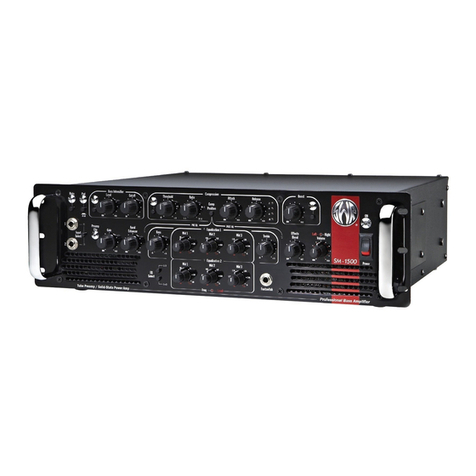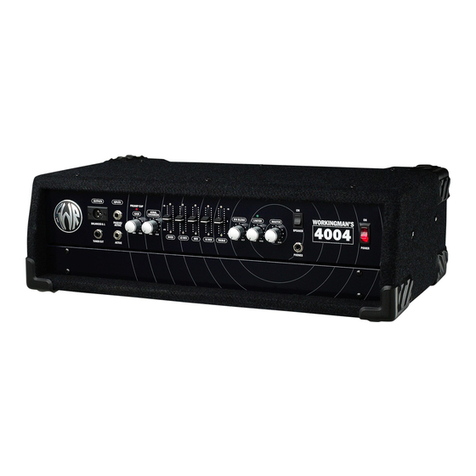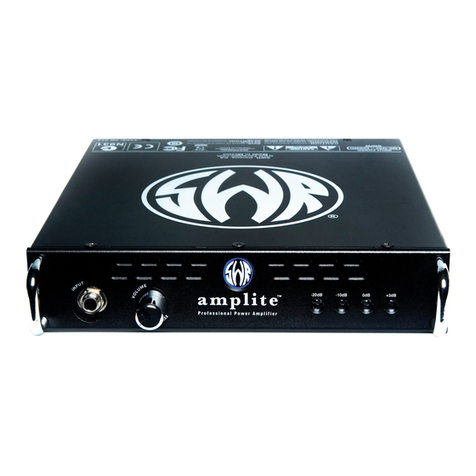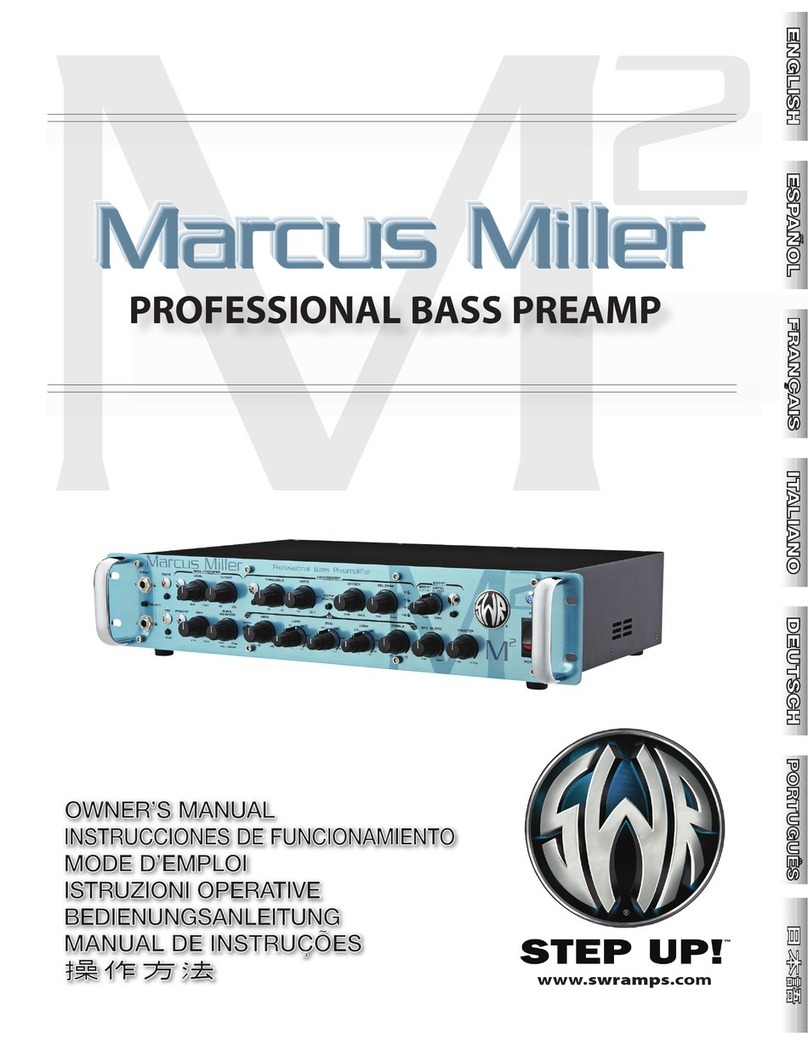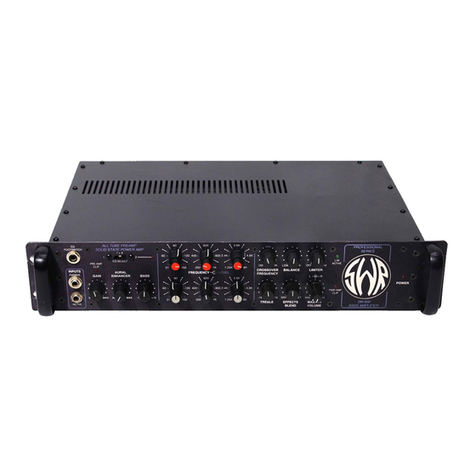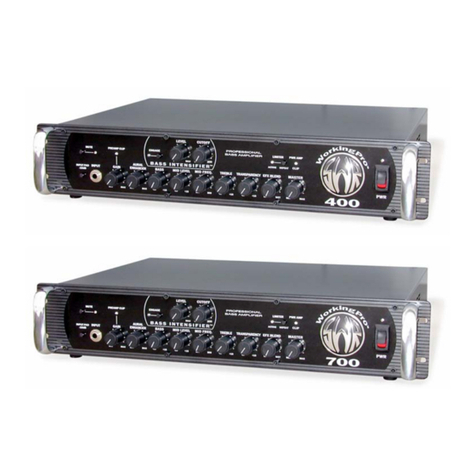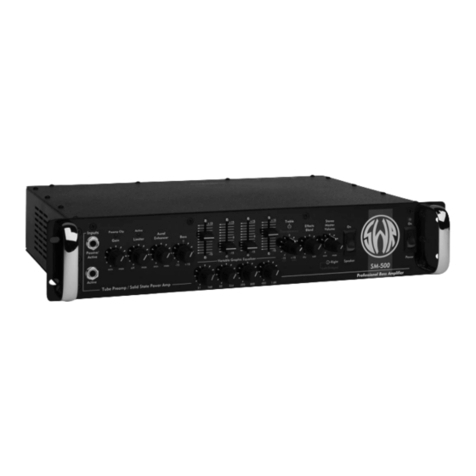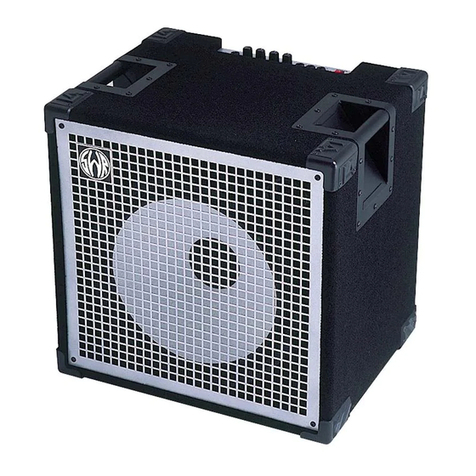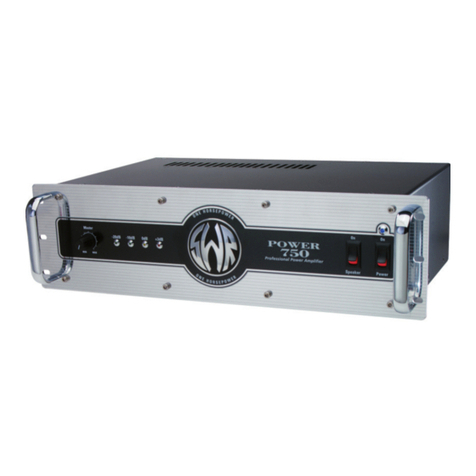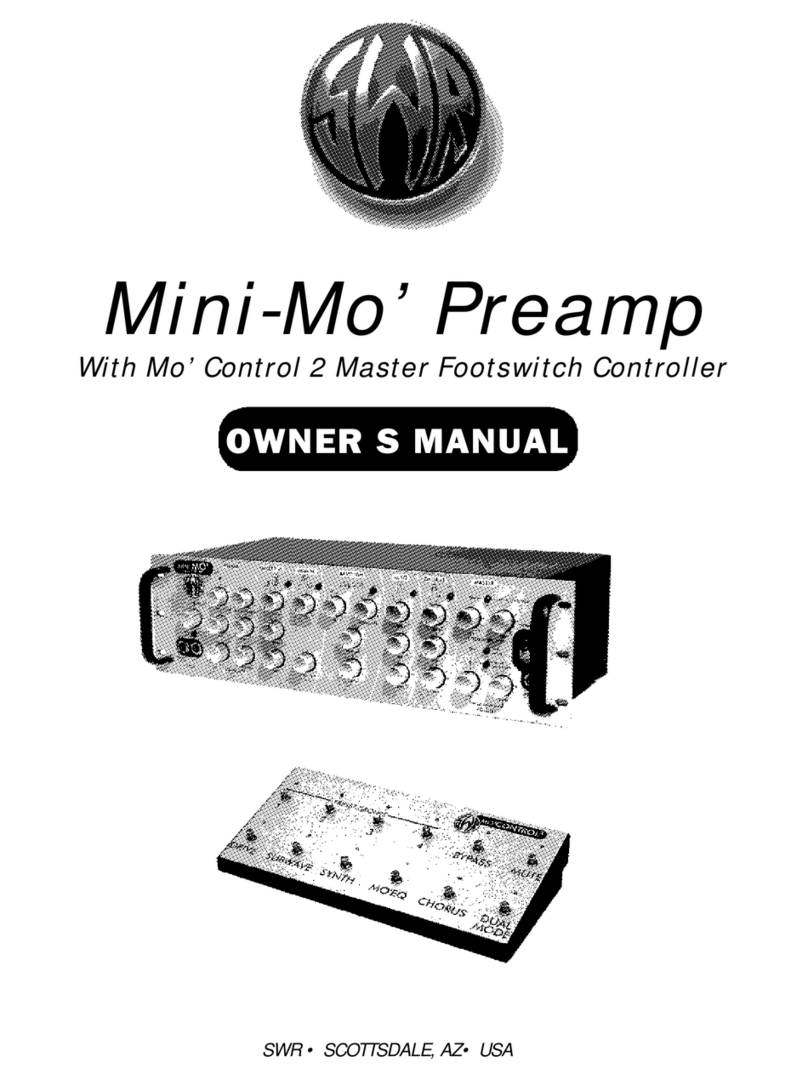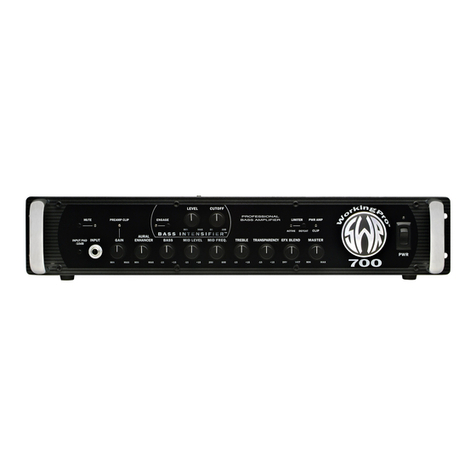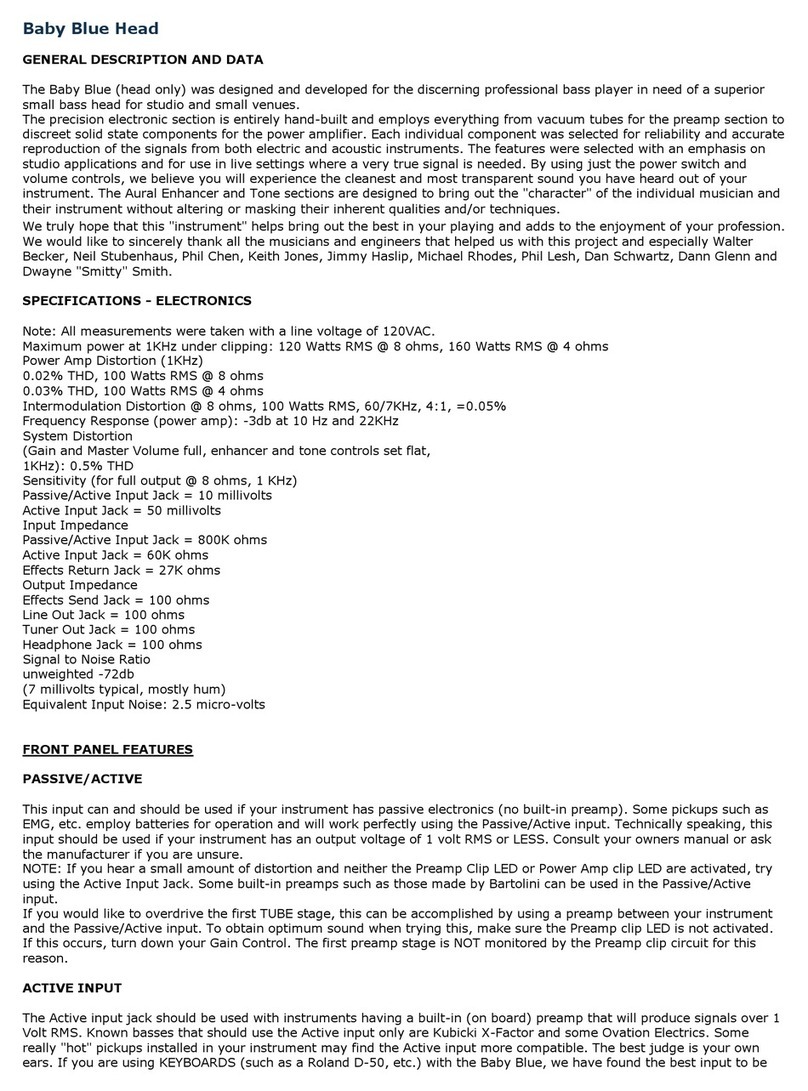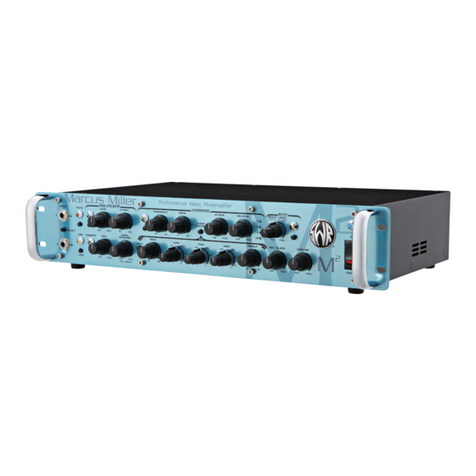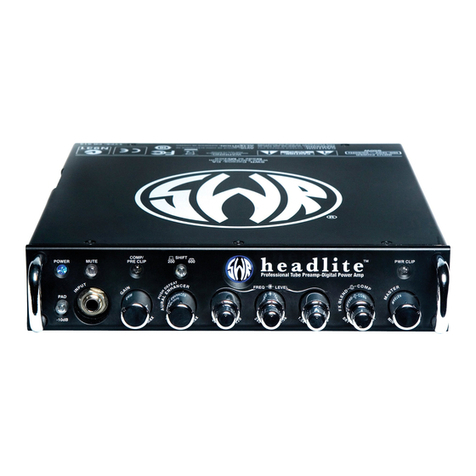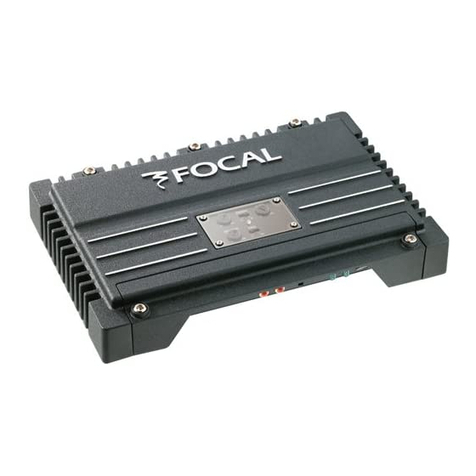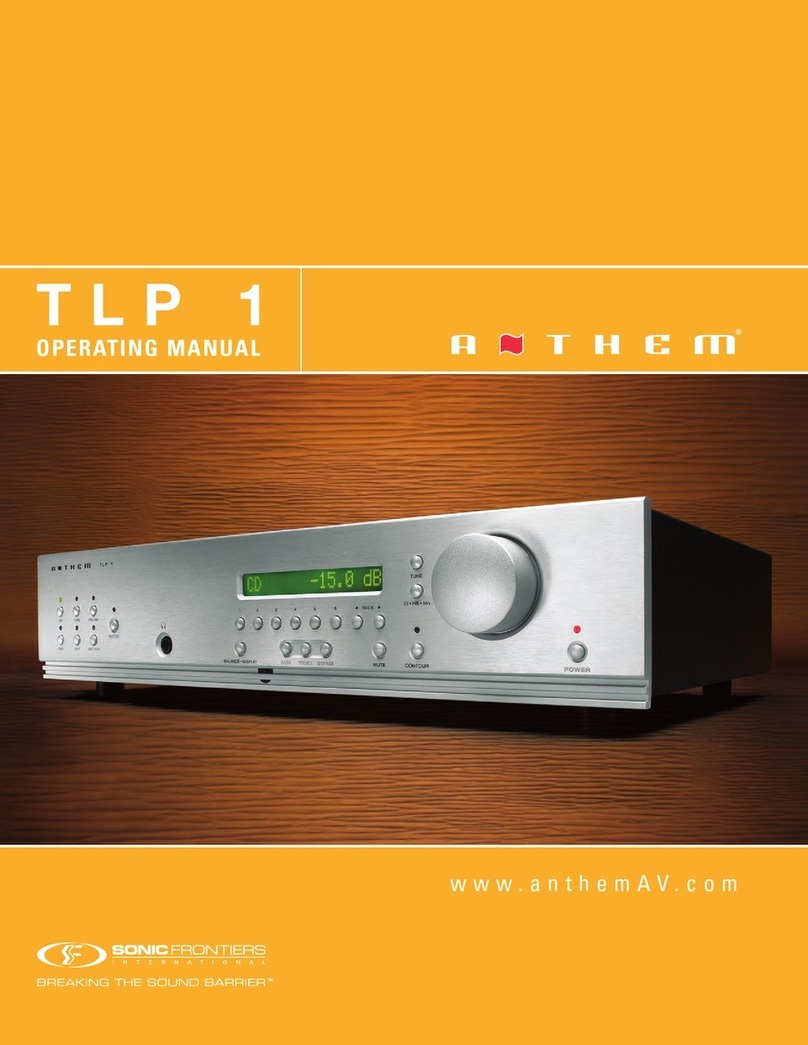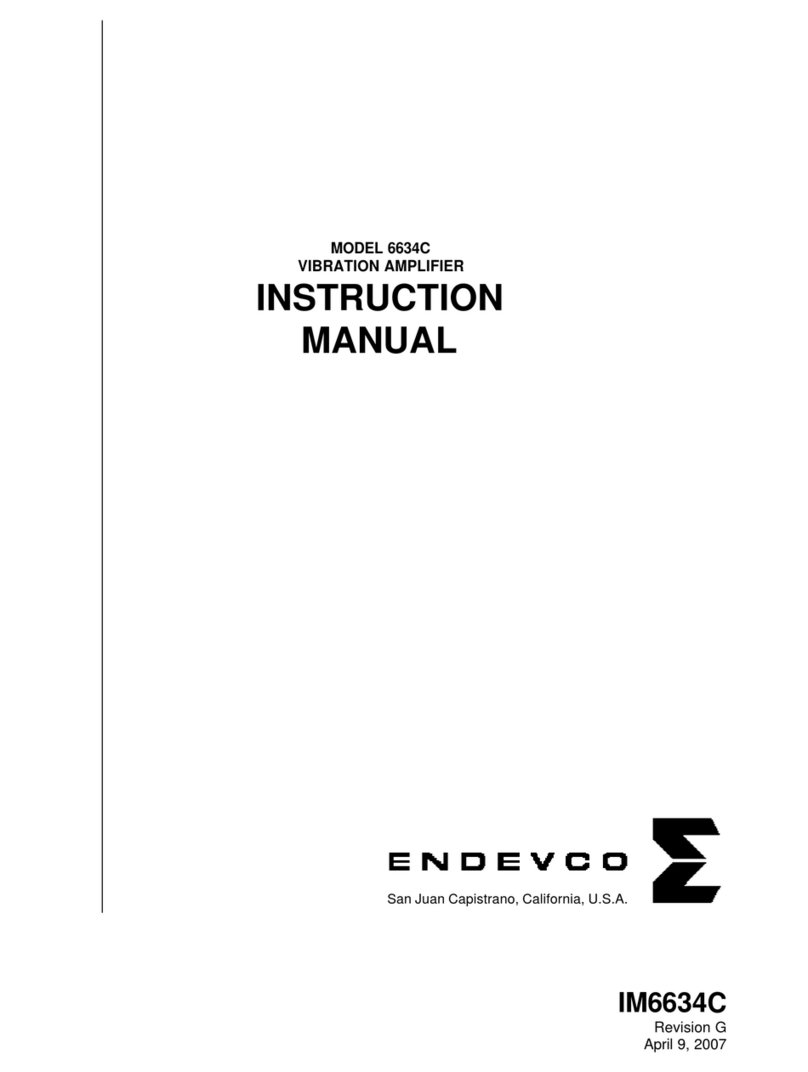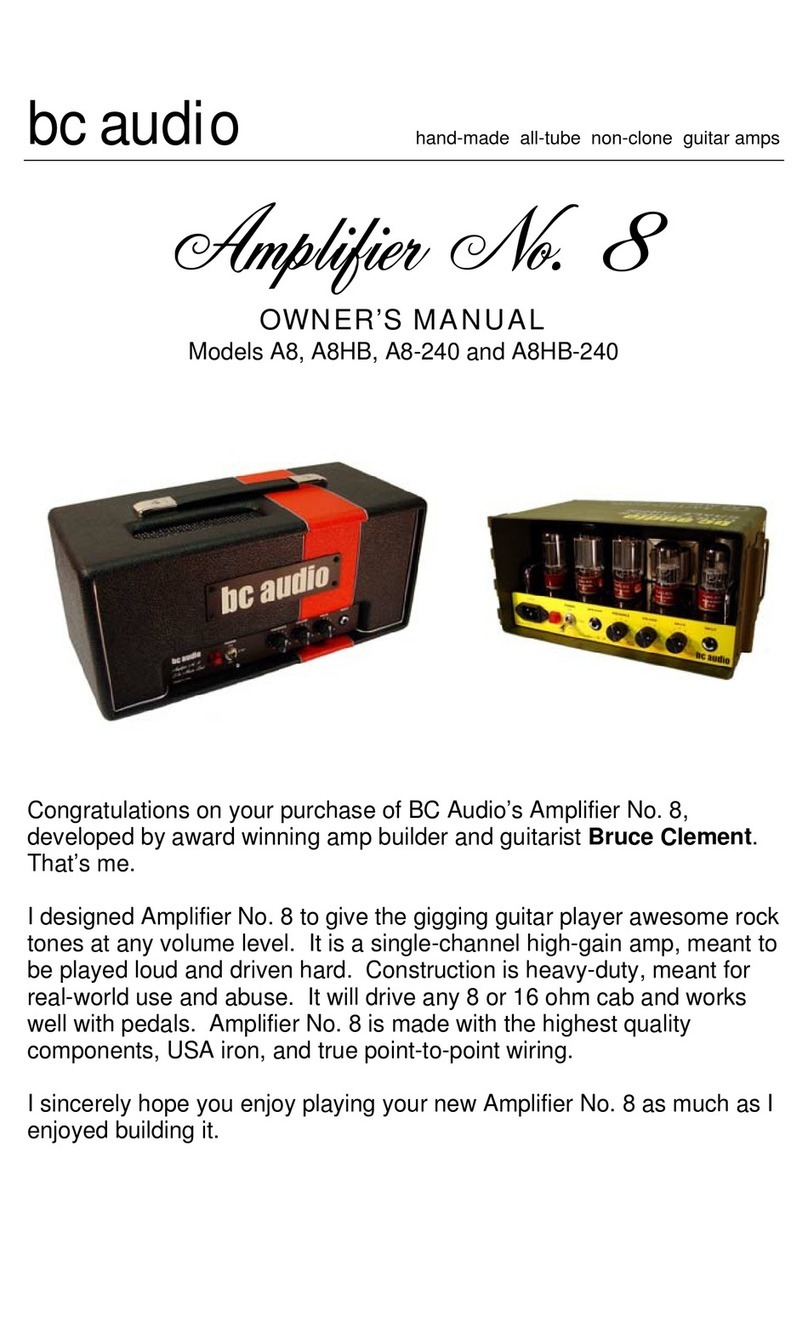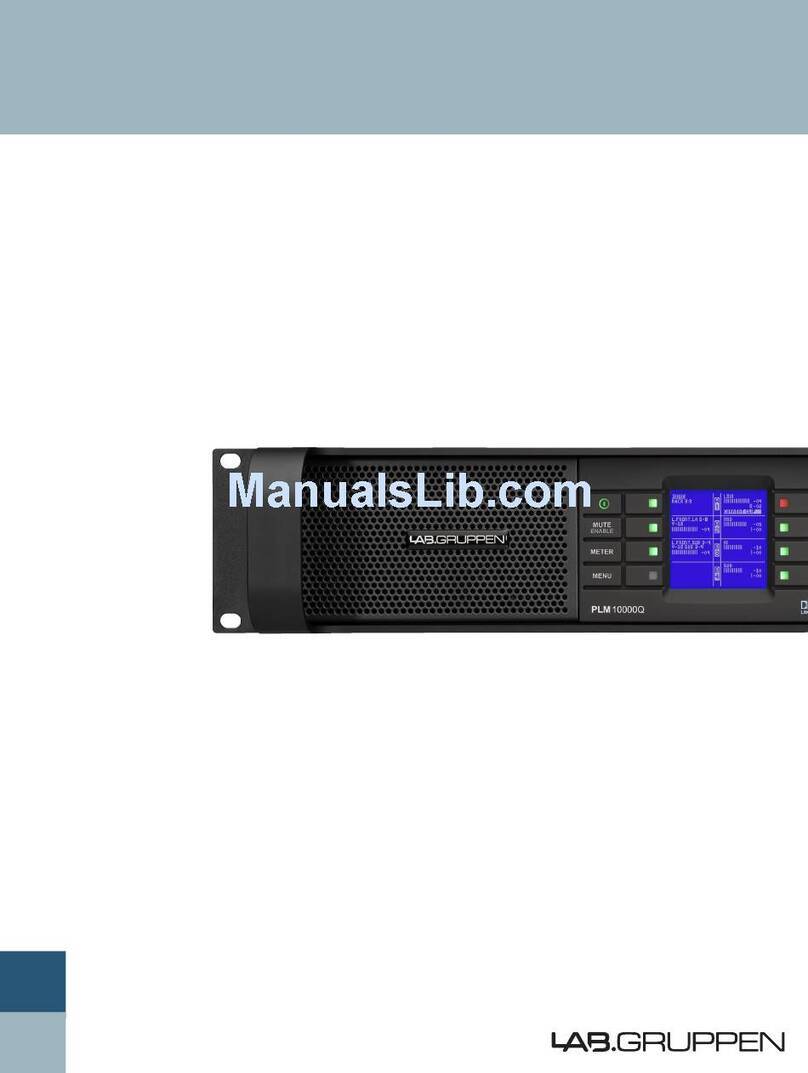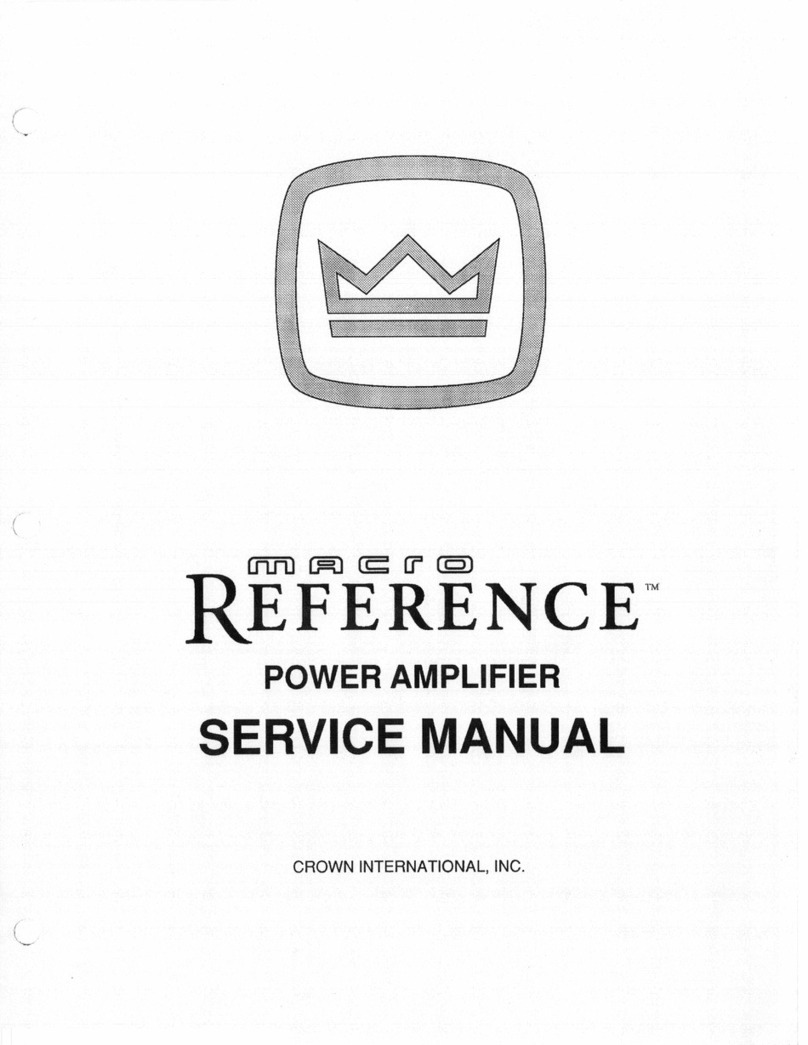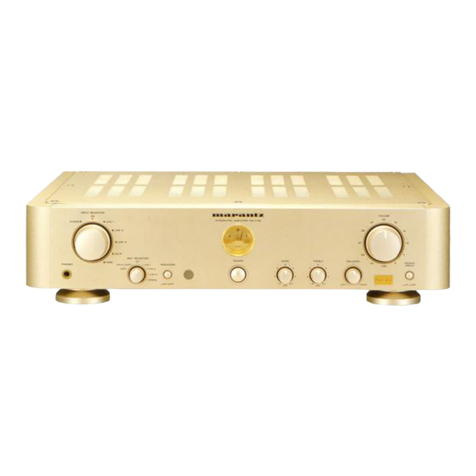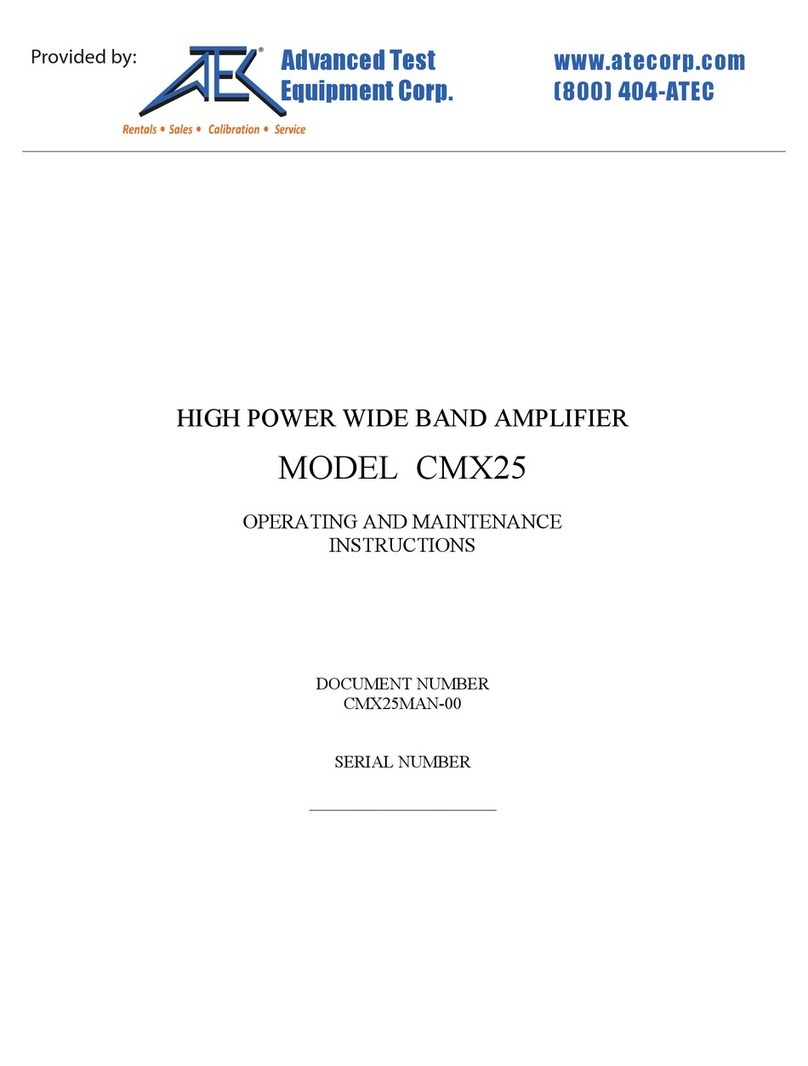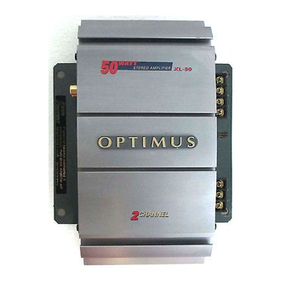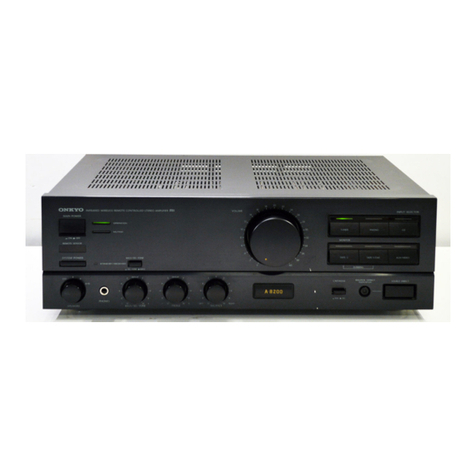
For each tone control, rotating the knob counter-clockwise from the center “click” position will reduce or
cut its designated frequency. Rotating the knob clockwise will boost its designated band or frequency.
Using the Tone Controls
To get the most out of the Tone Controls of your Workingman’s 10, it would be best to first understand
how the Aural Enhancer works, and how it interacts with the Bass, Midrange and Treble controls. Think
of it as a variable tone curve, changing with its position. As you raise the control from “0,” or the fully
counterclockwise position, you are elevating the whole range of sound (lows, mids, and highs) at fre-
quency points different than those selected for the individual Tone Controls. This remains true up to
about the “2 o’clock” position, at which point the mids start to drop off. The curves involved here are
gentle, as opposed to the very extreme curves you can create with the Tone Controls. Most significantly,
the Aural Enhancer will raise the low end at a point lower than the Bass control itself.
For a typical 4-string bass, the Bass control itself will suffice. For the 5-string player, the Aural Enhancer
will help bring out the fundamentals of your instrument (in the 30-60 Hz range). Discretion should be
used when doing this without an extension cabinet. True low fundamentals (one of the sonic signatures
of all SWR amplifiers) require lots of headroom and air motion. That’s why we recommend that 5-string
players use an extension cabinet to increase the power output of the amplifier and get more air moving.
Bass Control
The Bass control, as stated above, works in a range that will be useful under most “normal” conditions.
Its musical use might be thought of as a “fatness” control. Leaving the Aural Enhancer in a position
lower than 12 o’clock will not boost the extreme bottom so much as to make indistinct the working of
the Bass control. The overall “punch” of your instrument, from your low E-string on up about two
octaves (midway up the G-string), will be determined with this control. With passive instruments, this will
be straightforward. With active instruments having bass-boost controls, more exploration will be worth-
while. (Some active tone circuits have boost-cut controls, while others have straight boost controls).
Mid Range Control
The Mid Range control operates in a crucial area for most instruments. Many basses, particularly those
strung with roundwound strings, can have a very “honky” or nasal sound. Dropping the Mid Range con-
trol can go a long way toward smoothing out your tone. We suggest, though, that what sounds best
when you’re listening to your tone by yourself may not be what works best in a band or on a recording.
Sometimes that objectionable quality may be just the right “hair” on your note to still have an audible
presence in the track or on stage.
Treble Control
The Treble control operates in a tonal area that extends through and beyond the usual Treble control
range. It may be thought of as a “transparency” control. Boosting the control will open up the sound of
a dull instrument, particularly in conjunction with the piezo tweeter in the Workingman’s 10. However,
this is also the range of string rattle, finger slides, pickup clicks, etc. Again, we recommend you experi-
ment with the control alone with your instrument while finding your tone, and listen again in a band con-
text, both near to and away from the Workingman’s 10. Qualities such as punch, fatness, presence and
bite can be fairly well spread out. Treble, despite the broad dispersion of the piezo tweeter, is a very
directional quality. Spend some time exploring what you hear in this area as you move around.
EFFECTS BLEND
The Effects Blend control mixes the signal coming from your instrument with the sound coming from your
effect. With the Blend control fully counterclockwise, no signal from your effect will be heard. As you turn
WORKINGMAN’S COMBOS OWNER’S MANUAL • 33




















